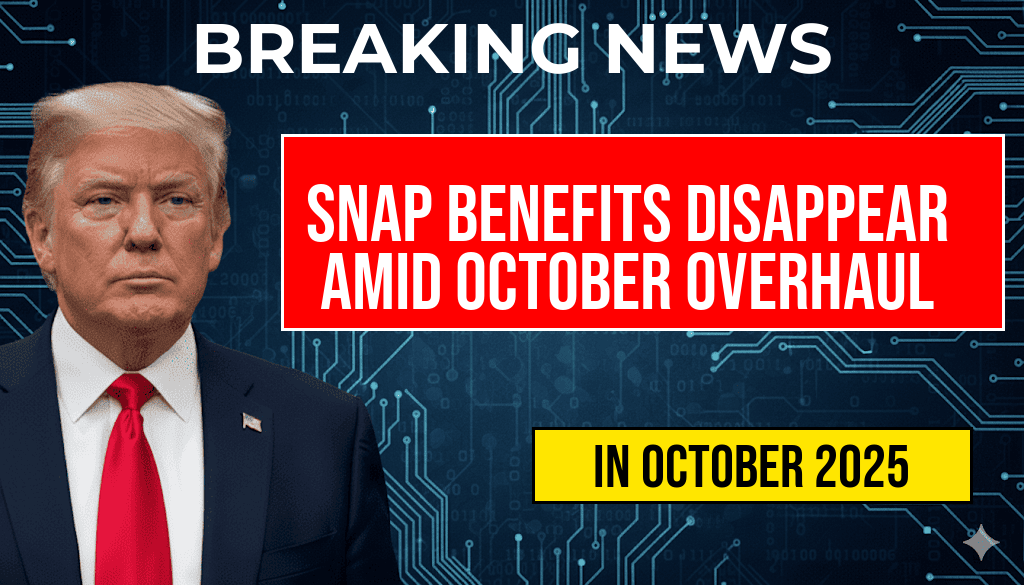The Supplemental Nutrition Assistance Program (SNAP) is poised for significant changes this October, as a major overhaul threatens to reduce benefits for millions of Americans. The adjustments stem from new legislation aimed at restructuring the program, which has experienced substantial growth during the COVID-19 pandemic. As federal and state agencies prepare for these changes, recipients are left wondering how the adjustments will impact their ability to access essential food resources. The October overhaul is expected to affect eligibility criteria, benefit levels, and overall program funding, raising concerns among advocates for low-income families and individuals reliant on SNAP for their daily nourishment.
Understanding the Changes to SNAP
SNAP, formerly known as food stamps, provides critical assistance to low-income households, enabling them to purchase food through the use of electronic benefits transfer (EBT) cards. The upcoming overhaul is designed to recalibrate the program in response to evolving economic conditions and to address budgetary constraints. Key elements of the upcoming changes include:
- Eligibility Adjustments: New income thresholds may restrict access for some households, particularly those that have recently seen slight increases in earnings.
- Benefit Reductions: The maximum monthly benefits are likely to be decreased, affecting purchasing power for many families.
- Work Requirements: Enhanced work requirements for able-bodied adults without dependents (ABAWDs) could lead to increased scrutiny of beneficiaries’ employment status.
Impact on Recipients
The modifications to SNAP are expected to have wide-ranging effects on recipients across the country. For many families, the proposed changes could mean a reduction in monthly food assistance, leading to difficult choices between paying for essential needs such as housing and medical care versus purchasing adequate food. According to the U.S. Department of Agriculture, SNAP currently serves more than 41 million Americans, with many relying on the program as a vital resource for nutrition.
Advocates for low-income populations are voicing concerns about how these changes may exacerbate food insecurity. “Many families are already struggling to make ends meet, and reducing benefits will only push them further into hardship,” said Maria Lopez, a food security advocate. “We need to ensure that our most vulnerable populations have access to the food they need to thrive.”
Potential Solutions and Alternatives
As the overhaul approaches, various stakeholders are advocating for alternative solutions to address the challenges posed by the changes. Some proposed measures include:
- Community Support Programs: Local food banks and community organizations can play a crucial role in providing additional resources to families facing food insecurity.
- Policy Adjustments: Policymakers are urged to consider temporary measures, such as emergency allotments, to cushion the impact of benefit reductions.
- Increased Funding: Advocates are pushing for increased federal funding for nutrition assistance programs to ensure that benefits remain adequate in the face of rising food prices.
Looking Ahead
The upcoming SNAP benefits overhaul is a significant shift in the landscape of food assistance in the United States. As federal and state agencies finalize the new regulations, many recipients are left uncertain about their futures. The economic implications of these changes are profound, particularly in light of ongoing inflation and rising living costs. Ensuring that families have access to nutritious food will require concerted efforts from both government and community organizations.
| Year | Number of Recipients | Average Monthly Benefit |
|---|---|---|
| 2020 | 42 million | $121 |
| 2021 | 41 million | $155 |
| 2022 | 41 million | $170 |
The decisions made in the coming weeks will undoubtedly influence the lives of millions of Americans. As understanding of these changes continues to evolve, it will be essential for all stakeholders to engage in open dialogue to mitigate the impact on those most affected by the SNAP benefits overhaul. For more information on SNAP and the pending changes, you can visit Forbes.
Frequently Asked Questions
What are SNAP benefits?
SNAP benefits, or the Supplemental Nutrition Assistance Program, provide food assistance to low-income individuals and families in the United States, helping them purchase necessary groceries and improve their nutrition.
Why are SNAP benefits set to disappear in October?
The anticipated disappearance of SNAP benefits in October is due to an upcoming overhaul of the program that is expected to change eligibility requirements and benefit amounts, impacting millions of recipients.
Who will be affected by the SNAP overhaul?
The SNAP overhaul will primarily affect low-income households currently receiving benefits, as well as those who may qualify under the new eligibility criteria that will be implemented.
What should recipients do to prepare for the changes to SNAP?
Recipients of SNAP benefits should stay informed about the upcoming changes, review their eligibility, and explore alternative food assistance programs to ensure they continue to have access to nutritious food.
Will there be any support available for those losing SNAP benefits?
Yes, there may be support available through local food banks, community organizations, and alternative assistance programs aimed at helping those who lose SNAP benefits during the overhaul.

Leave a Reply